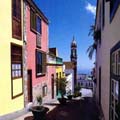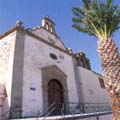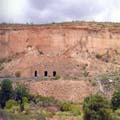History.
 It was a refuge for many guanches, canary natives, that did not submit to the will of the Spanish conquerors. The rebels of other menceyatos came to this land populated by volcanoes, to be taken in by the Menceyato of Abona that, curiously, was part of the Kingdoms of Peace at the dawn of the conquest, which were those that decided to ally themselves with the conquerors.
It was a refuge for many guanches, canary natives, that did not submit to the will of the Spanish conquerors. The rebels of other menceyatos came to this land populated by volcanoes, to be taken in by the Menceyato of Abona that, curiously, was part of the Kingdoms of Peace at the dawn of the conquest, which were those that decided to ally themselves with the conquerors.
Granadilla de Abona, as it is known today, was born well into the XVI century. There are many important archaeological sites in the municipality, most are near the village, such as the sepulchral caves of Chiñama, La Jaquita and Tagoror del Rey, discovered in the Canyon of the same name, which may be the most important.
The temple, under the name of San Antonio Abad, acquired the rank of parochial church on January 30th, 1617 and unfortunately, was destroyed by a fire. Its ruins were used as a base for the construction of the present parochial church, that since the XVIII century has been used by the municipality. The building has a beautiful structure, not even the tower built in 1885 affects its style.
 Granadilla de Abona achieved the administrative naming of municipality in the XIX century, and at the beginning of the XX century, it was named as head of the judicial party.
Granadilla de Abona achieved the administrative naming of municipality in the XIX century, and at the beginning of the XX century, it was named as head of the judicial party.
All this was not enough to improve its communications, since the population did not have any viable access by land. The only way of getting there from the centre of the island, until the first third of the present century, was to traverse the mountain on foot, with mules or horses. The sea was the only way to reach the other municipalities, until the first road was built by order of the first government of the Second Spanish Republic.
Places of Historical Interest
 Ancient Royal Road: Canales Altas
Ancient Royal Road: Canales Altas
House of the Pine (Casa del Pino) and Temple of Our Lady. Chiñama or Charco del Pino. 1725
Parochial Church of San Antonio Abad
Inside it conserves an altarpiece, sculptures and images of the Canary school, while the embossed silver sacred cups arrived at the temple as donations by sailor’s promises asking for the saint’s help to survive the sea’s storms.
Settlements of the Historical Area
Calvario Chapel. 1882